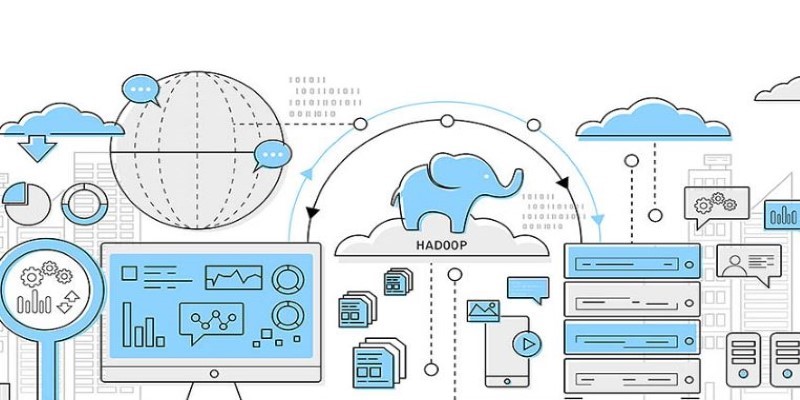In today's digital age, data is being generated at an unprecedented rate from every corner of the internet and across various industries. But with this explosion of information comes a challenge: how to store and manage it effectively. Big Data storage is the answer to this growing need, offering solutions that allow businesses, governments, and organizations to handle vast amounts of information.
Whether we need it for real-time analytics, customer insights, or decision-making, Big Data storage is key to transforming enormous datasets into assets. In this article, we will explore what Big Data storage entails and why it's so important today.
What Is Big Data Storage?
Big Data storage refers to gathering and storing big datasets that are too large, varied, and too quickly moving for conventional database management systems to deal with. It consists of many technologies aimed at storing and handling data that could vary from terabytes to petabytes and even exabytes in capacity. Big Data is different from traditional data since it exists in numerous formats—structured, unstructured, or semi-structured. Traditional storage technologies tend to be inefficient or incapable of expanding to the size of Big Data. Thus, these large amounts of data are stored, retrieved, and processed with the help of specialized systems like distributed storage systems and cloud storage.
Big Data storage architecture commonly consists of several servers, storage systems, and devices combined to ensure that the data is available and can be processed efficiently. Distributed storage is one of the main approaches utilized in Big Data storage. This implies that the data is not stored in a single location but distributed across multiple systems, guaranteeing redundancy, reliability, and scalability. HDFS and cloud storage infrastructure such as Amazon S3 are some examples of how Big Data storage is executed.
The Role of Big Data Storage in Managing Large Volumes of Data
The amount of data that organizations handle today is too much. Big Data storage systems are instrumental in storing this information in a manner that renders it available and useful. With the data dispersed over numerous servers or cloud environments, no one point of failure can ever taint the integrity or accessibility of the information. This is critical for entities that are based on real-time analysis, such as e-commerce sites, social media networks, and banking organizations.

Big Data storage solutions not only offer a place to keep the data but also provide a way to analyze it quickly. With the right infrastructure, powerful algorithms and machine learning models can be run on the data to extract valuable insights. These insights can then be used for a variety of purposes, such as improving business decisions, predicting consumer behavior, or even detecting fraudulent activities.
Uses of Big Data Storage
Big Data storage plays a critical role across various industries, from healthcare to finance to entertainment. By providing a scalable and reliable way to manage and store large volumes of data, businesses, and organizations can unlock a variety of benefits.
Healthcare
Big Data storage in healthcare manages patient records, clinical data, and medical images. It supports the increasing use of electronic health records (EHR) and telemedicine, enabling faster analysis for better diagnoses, treatment outcomes, and improved patient care.
E-Commerce and Retail
In e-commerce, Big Data storage helps understand consumer behavior by storing data from interactions, purchases, and browsing patterns. This enables personalized recommendations, optimized pricing, and targeted marketing strategies, enhancing the shopping experience and increasing sales.
Finance and Banking
Big Data storage aids financial institutions by managing transactions, customer records, and real-time market data. It helps detect fraud, assess risks, and process vast amounts of data from stock markets, providing the necessary infrastructure for effective data analysis.
Social Media
Social media platforms use Big Data storage to manage user data, posts, comments, and interactions. This enables targeted advertising, content personalization, and efficient management of growing video and image files, which are essential for engaging users and optimizing platform performance.
Smart Cities and IoT
Big Data storage is key for smart cities and IoT systems. It helps manage data from sensors embedded in infrastructure, optimize traffic flow and energy consumption, and track environmental changes to improve urban planning and sustainability.
Types of Big Data Storage Systems
Big Data storage systems come in various types, each suited for different needs and purposes. The choice of storage system depends on factors like the size of the data, how fast the data is generated, and the level of access required.
Cloud Storage

Cloud storage, like Amazon S3, Google Cloud, and Microsoft Azure, offers scalable, flexible, and cost-effective solutions for Big Data. It allows users to store vast amounts of data without investing in on-site infrastructure and provides remote access for teams and organizations.
Distributed Storage
Distributed storage systems, such as Hadoop and Apache Cassandra, spread data across multiple machines, enabling scalable Big Data systems. This architecture ensures high availability and fault tolerance, allowing efficient handling of growing data by distributing it across multiple nodes.
On-Premise Storage
On-premise storage provides businesses with greater control over data security and privacy, especially in regulated sectors like finance and healthcare. While it avoids cloud risks, it requires significant investment in hardware, infrastructure, and ongoing maintenance for data management.
Conclusion
Big Data storage is vital for managing and processing large volumes of information across industries like healthcare, finance, and e-commerce. It ensures data is stored securely, accessible, and scalable for effective analysis. Despite challenges like data security and high costs, the benefits—such as improved decision-making, real-time analysis, and enhanced operational efficiency—make it a crucial investment for businesses. As data continues to grow, Big Data storage solutions will evolve, enabling organizations to harness the full potential of their data, ultimately leading to innovation, better services, and improved outcomes across various sectors.











